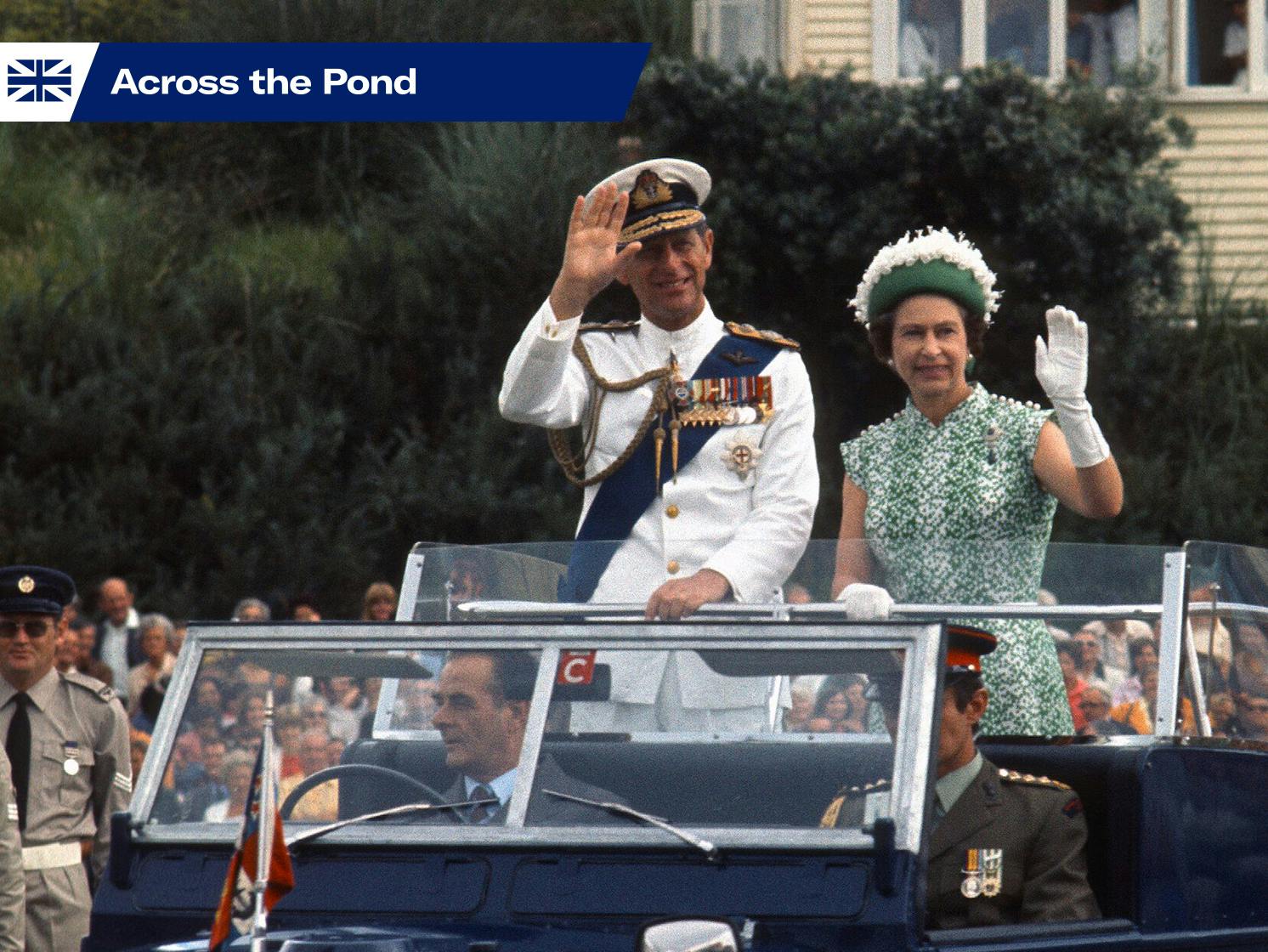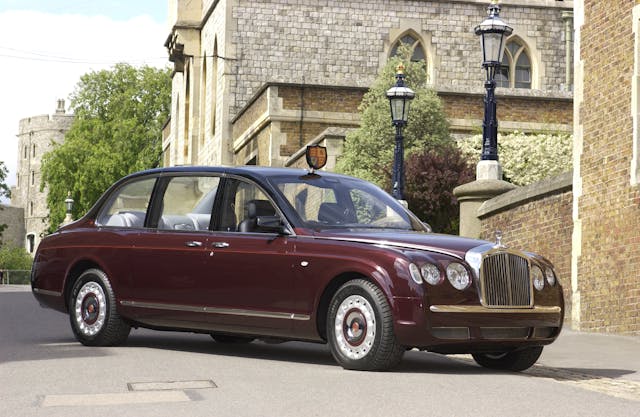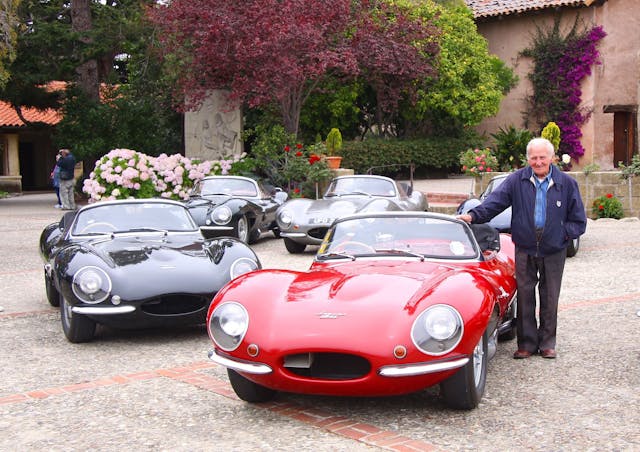Media | Articles
Prince Philip the driver and rider, pilot and mischief maker

The news that Prince Philip will make his final journey in a modified Land Rover 130 Defender “gun bus”, rather than the more traditional horse-drawn gun carriage shouldn’t come as a surprise; or even that he personally supervised the Land Rover’s conversion in 2005.
Why would we wonder that the recently departed Duke, a former Royal Navy officer well-versed in advanced engineering and a man possessed of a curious mind, shouldn’t have an eye for a decent motor car? His conviction that Britain needed to pull itself up by its own bootstraps came at a time when British car makers were at their pomp: Triumph was building sporting sedans which ultimately inspired BMW; Austin and Morris built the genuinely world-beating Mini; and Rover was making the innovative P6.
His probing, questioning style simply led to connections. For example, a visit to a Canadian aircraft manufacturer early in his married life and a well-aimed enquiry about whether the cockpit construction techniques could be adapted for use in cars, helped inspire the use of Perspex acrylic rear panels for the back of the State limousines.
In 1956 he also visited the Silver City Airways terminal at Ferryfield aerodrome at Lydd in Kent which provided car transport to the continent. The Duke flew to Le Touquet in France in a Bristol Superfreighter of the company’s cross-Channel air ferry fleet, taking the controls from Captain David Flett for the 20-minute flight soon after take-off, and flying the aircraft until it had passed over the French coast. Captain Flett had little to fear: the Duke of Edinburgh had earned his pilot’s wings in 1953.
And if the Duke’s own choice of a 1961 Alvis TD21 drophead wasn’t exactly in the vanguard of automotive modernism, it showed a rich sense of the English style in car design. The Graber of Switzerland coachwork was a graceful as a gliding swan and the 115-hp, 3.0-liter six-cylinder engine was gutsy if not exactly high-revving.
Marketplace
Buy and sell classics with confidence
The Duke had seen this elegant car at its launch at the Earls Court motor show and ordered a cabriolet version a couple of years later. He specified his car with a ZF manual gearbox, which got the best out of the drivetrain and this tough but expensive transmission was also specified by Aston Martin for its DB5 and DB6 models, the latter in drophead Volante form being the choice of the Duke’s son Prince Charles, a car he still owns.
The Alvis had followed an 1954 Aston Martin Lagonda 3-liter Drophead Coupé, complete with an early radio telephone, which the Duke drove, and before that an MG TC sports car in which the future Queen travelled while the couple were stepping out.
In a letter written to Betty Shew who was preparing a Royal Wedding supplement just months before her wedding in 1947, The Queen described Philip’s love of driving fast and the diminutive MG.
“Philip enjoys driving and does it fast!” she wrote on headed paper from Balmoral. “He has his own tiny M.G. which he is very proud of. He has taken me about in it, once up to London, which was great fun, only it was like sitting on the road, and the wheels are almost as high as one’s head.” The letter was sold at auction in 2016 for £14,400.
While most of the cars used by the Duke were highly conventional, a 1981 Bedford CF Electric was most certainly in the vanguard and chimed with the Duke’s conservation efforts. This electric van was an attempt by the British commercial vehicle maker to get into short-run delivery markets (such as Post Office deliveries) with partner Lucas Chloride. In the early ’80s, the Bedford CF panel van was converted to run on a series of lead-acid drive batteries mounted in the floor. It was the first production battery-electric vehicle to be based on a conventionally fueled model, with electric traction coming from an electric motor mounted behind the rear differential.
Two early prototype all-seat versions were built, the first of which went to the Royal Mews for use around the capital. The Duke was very keen on his electric minibus and was reluctant to see it go, although it ended up in the mews at Sandringham from where it was recovered and now is in Vauxhall’s historic collection.

The Duke also had a hand in the design of the Bentley State Limousine when in 2002 the company (under its new Volkswagen ownership) offered to build a new car with a consortium of British engineering suppliers. Just as with what is believed to be the Foley Specialist Vehicles converted gun bus that will serve as the Duke’s no-nonsense hearse, there was a second Bentley limousine, just in case.
While he protested that it was “my wife’s car”, the Duke couldn’t resist casting an eagle eye over the first sketches.
“He saw the initial renderings,” said one source, “and we wanted to show off the wood-working skills of Mulliner Park Ward, so there was a lot of walnut veneer. He looked at the drawings and said: ‘what’s all this?’.
‘It’s walnut woodwork, sir,’ we replied.
‘You people have a walnut fixation,’ he said. ‘I can’t possibly get in and out of the car with all my clanky stuff on.'”
Bentley duly reduced the amount of wood and trimmed the rear seats with wool cloth, with harder-wearing leather reserved for the side of the seats and the front seats.

The development team nicknamed the car, “Betty’s Barge,” and Joe Last, the Queen’s head chauffeur achieved almost legendary status as the man who drove the 20-ft 6-in long limousine hard enough to get it sideways on a test track.
At the inauguration of the Bentley Limousine, I was invited to meet Last at the Royal Mews at Buckingham Palace where he cautiously revealed that actually there was a bit more to the wood issue.
“Well, Her Majesty likes polished wood and the Duke of Edinburgh doesn’t, so they compromised on that,” he said. He also revealed that there had been concerns over the huge glass rear screen; the equivalent Plexiglas screens on the Phantoms have leaked over the years as the old-fashioned seals had dried up and allowed water in.
I noticed that “Number-One” Bentley had a small radio and a small CD changer in the arm rest, but Last cut my question off before it had been asked.
“We never play music,” he said firmly. “You have to remember these are cars built to do a job. The only extras we carry are a chamois leather, spare bulbs and a map so that if the Duke of Edinburgh points something out at the side of the road we can look it up and tell him what it is.”
While it is Prince Michael of Kent who is usually seen as the “motoring royal,” the Duke of Edinburgh more than once found himself in a motoring environment. In the ’70s he even met Formula 1 champion James Hunt on a pits walkabout. His fearless nature came through in April 1957, however, when he visited the Motor Industry Research Association test track near Rugby for an appointment with the Jaguar XKSS and redoubtable chief test driver, Norman Dewis.

“I was pressed very hard by his people to be careful when I was on the banking—don’t have an accident, don’t go above 50 mph, and all this sort of stuff,” Dewis told a reporter from the Daily Mail (as reported by his biographer Paul Skilleter). “I asked him at what speed I should drive and he said he would leave it to me. His only comment at 135mph was to ask how many revolutions a minute we were doing.”
While the Duke was at perfect ease, the speed didn’t go down well with the rest of the royal party. “When we went by on the second lap going at this speed,” recalled Dewis, “I could see these arms waving …”
For a man whose stock phrase was: “well get on with it,” Prince Philip didn’t hang about himself, whether at the reins of his coach-and-four carriage driving, or at the wheel of his many cars. He didn’t get caught speeding like his daughter Princess Anne, or adopt the anonymity of a motorcycle and a smoked glass visor as have his grandsons William and Harry at times. However, he did favor a Jincheng DX50 Easy-Rider 50-cc mini motorbike for getting around during the Royal Windsor Horse Show. And the freedom of the open road (the Queen’s Highway!), at the wheel of his own car, was clearly a good antidote for the Duke from the occasionally stifling formality of royal life.
In 2019 that came to an end, however, when the Duke, at the age of 97, was involved in a serious crash. Pulling out of a driveway to the Sandringham estate in Norfolk, his Land Rover Freelander was hit by a car with two women and a baby on board. The baby wasn’t hurt, but the two women had to be treated in hospital, one of them for a broken wrist. The Freelander tipped over and a shaken Duke of Edinburgh was rescued from the sun roof by a passer-by. A few weeks later, Buckingham Palace announced that the Duke had surrendered his driving license.
Perhaps the best motoring story concerns not the Duke’s cars, bikes, carriage driving and flying, but a car launch. In 1998, Rolls-Royce produced its last new car under Vickers ownership, the Silver Seraph. The specialist press saw it at the Geneva Motor Show, but there was also a discreet launch to owners and dealers in New York, which the Duke was persuaded to attend.
“He was picked up in a long wheelbase Silver Spur and mixed with the crowd at the venue,” recalled a Rolls-Royce manager, “and of everyone he met he would ask, ‘Do you own a Rolls-Royce?’ If they said yes, he’d ask, ‘What do you think of the head room in the back?’. It was pretty clear he didn’t think much of the head room in the car he came in.
“So, then his personal police officer came to tell me the Duke was leaving and was actually in the car, which was a new Silver Seraph. I dashed down, opened the back door and thanked him profusely for attending. Then the mischief came over and I said, ‘And what do you think of the rear headroom, your Royal Highness?’
“He knew exactly what I was getting at and smiled and said: ‘It’s very good, thank you.’”












